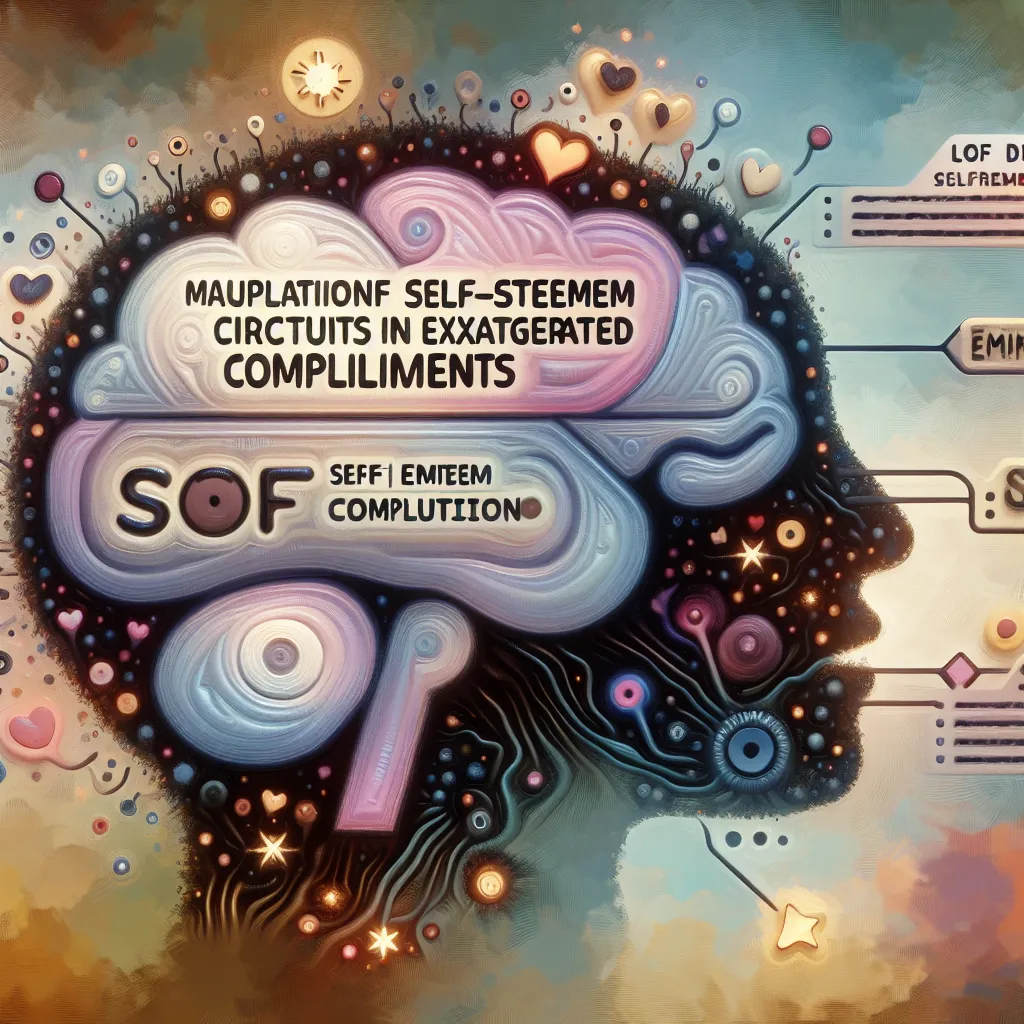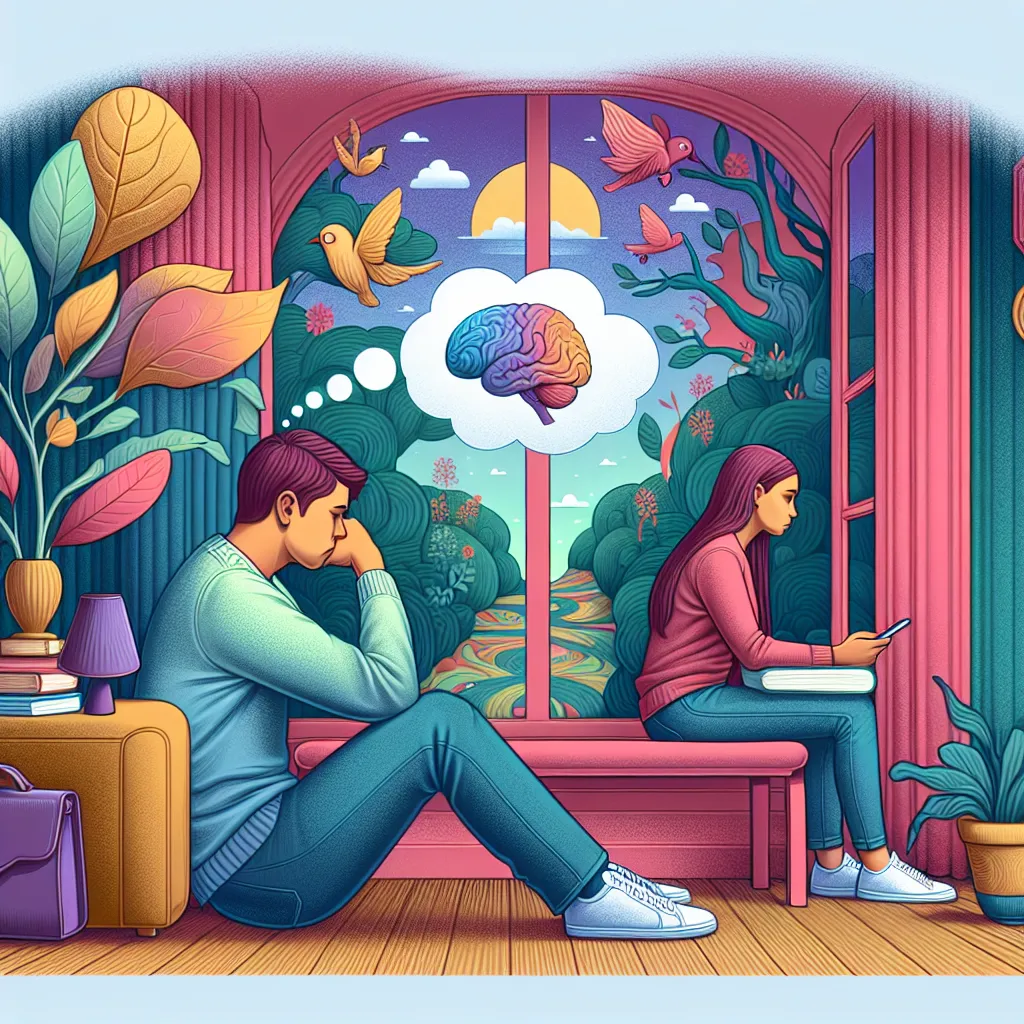Hello, relationship seekers!
Today, we’re diving deep into an important question about relationships: “How does a cheating partner’s gaze trick the brain’s suspicion circuits?” This intriguing topic is a blend of psychology, neuroscience, and human behavior.
The Direct Answer
To answer this directly, a cheating partner’s gaze doesn’t necessarily ‘trick’ the brain’s suspicion circuits. These circuits, based in the amygdala, are designed to alert us to potential threats. However, our cognitive biases, such as trust or love for the person, can override these suspicions. Moreover, a dishonest partner might exhibit certain nonverbal cues, such as avoiding eye contact, which could either trigger suspicion or be dismissed due to our biases. Now, let’s delve deeper into the mechanisms and influences at play in this complex scenario.
1. Understanding the Brain’s Suspicion Circuits
Our brain’s suspicion circuits are part of our survival mechanism, alerting us to potential threats. In the context of relationships, these circuits can get triggered when there is a perceived dishonesty or betrayal.
A. Role of the Amygdala
The amygdala, a part of our brain responsible for processing emotions, plays a key role in suspicion. It’s designed to alert us to potential threats.
– Expert Perspectives: According to Dr. Tali Sharot, a cognitive neuroscientist, the amygdala helps us judge trustworthiness from facial cues, including eye contact. Dr. Paul Zak, a neuroeconomist, also mentions that the amygdala assesses trustworthiness and risk.
– Psychological Research: A study published in “Nature Neuroscience” found that the amygdala is involved in making judgments about trustworthiness based on facial expressions.
– Real-World Examples: In a relationship, if a partner avoids eye contact or displays incongruent facial expressions, it can trigger the amygdala, causing suspicion.
B. Cognitive Biases and Love
Cognitive biases can often override our suspicion circuits, particularly when there’s a strong emotional bond, like love.
– Historical Context: The concept of love blinding us to flaws or dishonesty goes back centuries, present in literature like Shakespeare’s “Romeo and Juliet.”
– Common Challenges: Trusting partners often dismiss signs of dishonesty due to cognitive biases, such as confirmation bias, where they only acknowledge information that supports their belief in their partner’s fidelity.
– Practical Applications: Understanding these biases can help individuals assess their partner’s behavior more objectively.
C. Nonverbal Cues and Eye Contact
A cheating partner’s gaze or lack thereof can be a significant nonverbal cue in detecting dishonesty. However, interpreting these signs isn’t always straightforward.
– Expert Perspectives: Dr. Paul Ekman, a psychologist specializing in nonverbal cues, highlights that liars often avoid eye contact. However, he also mentions that skilled liars can maintain eye contact, making detection difficult.
– Psychological Research: A study published in “Psychological Science” suggested that eye contact can be an indicator of lying, but its interpretation can be influenced by cultural and personal factors.
– Real-World Examples: In a relationship, avoiding eye contact or staring too intently can be potential signs of dishonesty but should be considered in context with other factors.
2. Deceptive Behavior and Detection
Understanding deceptive behavior and how it’s detected can provide insight into the dynamics of cheating and suspicion.
A. Behavioral Cues of Deception
Cheating partners often exhibit certain behavioral cues, but detecting dishonesty isn’t straightforward.
1. Controlled and Overcompensated Behavior: Cheaters might control their behavior to avoid detection, leading to overcompensation. For instance, they might maintain excessive eye contact to appear truthful.
2. Microexpressions: These are involuntary, fleeting facial expressions that can reveal true emotions, according to Dr. Ekman. A cheating partner might display guilt or anxiety through microexpressions.
3. Inconsistencies: Behavioral inconsistencies, like changes in eye contact patterns, could indicate deception.
4. Context: It’s crucial to consider the context when interpreting these signs. For instance, a partner avoiding eye contact during a serious conversation about their fidelity could be more suspicious than during a casual chat.
B. Challenges in Detecting Deception
Despite these cues, detecting deception is challenging due to various factors.
– Expert Perspectives: Dr. Bella DePaulo, a psychologist specializing in deception, mentions that people are generally poor lie detectors. Factors such as cognitive biases, emotional involvement, and the deceiver’s skill can influence detection accuracy.
– Psychological Research: A meta-analysis published in “Psychological Bulletin” found that people correctly identify lies only about 54% of the time.
– Real-World Examples: In relationships, accusations of dishonesty based solely on perceived behavioral cues can lead to conflict and mistrust.
C. Improving Detection Accuracy
While challenging, detection accuracy can be improved by understanding nonverbal cues and incorporating contextual factors.
– Expert Perspectives: Dr. Leanne ten Brinke, a forensic psychologist, suggests that indirect cues, like changes in behavior patterns, can be more reliable indicators of deception.
– Psychological Research: Research published in “Current Directions in Psychological Science” indicates that focusing on inconsistent emotional expressions can improve lie detection.
– Real-World Examples: In relationships, noticing changes in a partner’s behavior, such as their gaze pattern, and considering it in context can help assess their honesty.
3. Building Trust and Dealing with Deception
Building trust in a relationship is crucial, and understanding how to deal with deception is equally important.
A. Building Trust
Building trust involves open communication, consistency, and honesty.
– Expert Perspectives: Dr. John Gottman, a prominent relationship psychologist, suggests that trust is built in small moments of positive interaction and consistency.
– Psychological Research: Studies indicate that trust is correlated with relationship satisfaction and longevity.
– Real-World Examples: Regular communication, keeping promises, and showing empathy can help build trust in relationships.
B. Dealing with Deception
Dealing with deception involves confronting the issue, understanding the reasons, and deciding on the next steps.
– Expert Perspectives: Dr. Gottman advises that dealing with betrayal should involve understanding the reasons behind it, discussing feelings, and deciding whether the relationship can be rebuilt.
– Psychological Research: Studies indicate that forgiveness, open communication, and therapy can help in recovery from betrayal.
– Real-World Examples: Seeking professional help, such as relationship counseling, can provide guidance in dealing with deception.
C. Preventing Future Deception
Preventing future deception involves building a strong relationship foundation and maintaining open communication.
– Expert Perspectives: Dr. Susan Heitler, a clinical psychologist, suggests that prevention strategies should include maintaining relationship satisfaction, addressing issues promptly, and fostering open communication.
– Psychological Research: Studies indicate that relationship satisfaction and open communication can reduce the likelihood of infidelity.
– Real-World Examples: Regular relationship check-ins, expressing needs openly, and maintaining emotional intimacy can help prevent future deception.
4. Additional Context and Considerations
While understanding how the brain’s suspicion circuits work and how deception manifests is important, it’s also crucial to consider the complexities of human behavior and relationships.
- The Complexity of Human Behavior: Human behavior, including deception, is complex and influenced by various factors. A cheating partner’s gaze might not always be a reliable indicator of their honesty.
- The Role of Individual Differences: Individual differences, like personality traits and past experiences, can influence deception and its detection. For example, some people are naturally more suspicious, while others are more trusting.
- The Importance of Communication: Open and honest communication is key in dealing with suspicions and potential deception in relationships.
Conclusion: The Definitive Answer
Based on all the evidence we’ve examined:
– Role of the Amygdala: The amygdala plays a significant role in our suspicion circuits, alerting us to potential threats based on facial cues such as a partner’s gaze.
– Influence of Cognitive Biases and Love: Cognitive biases and love can often override these suspicion circuits, leading us to dismiss potential signs of dishonesty.
– Complexity of Deception Detection: Deception detection is complex, influenced by the deceiver’s behavior, the detector’s biases, and the relationship context.
In conclusion, a cheating partner’s gaze doesn’t necessarily ‘trick’ our brain’s suspicion circuits. Instead, our interpretation of their gaze and other behaviors can be influenced by various factors, including our cognitive biases, emotional bond with the partner, and understanding of nonverbal cues.
Understanding this complexity can help us navigate suspicions and potential deception in relationships. It underscores the importance of open communication, trust, and understanding in maintaining healthy relationships.



